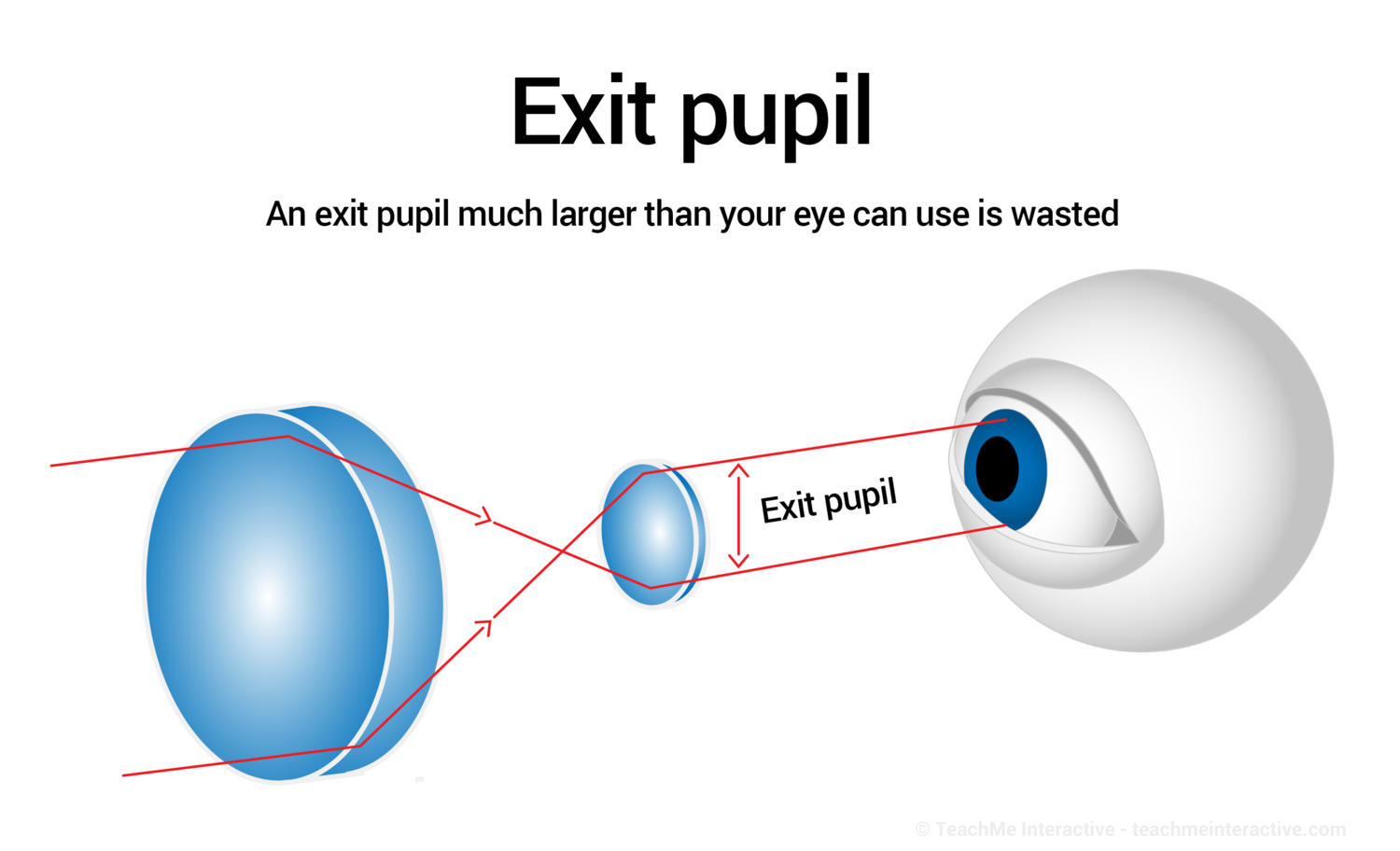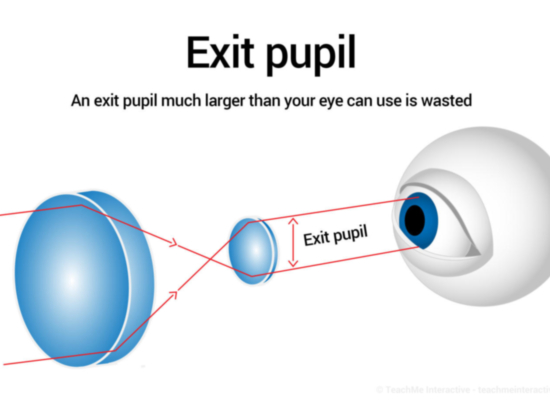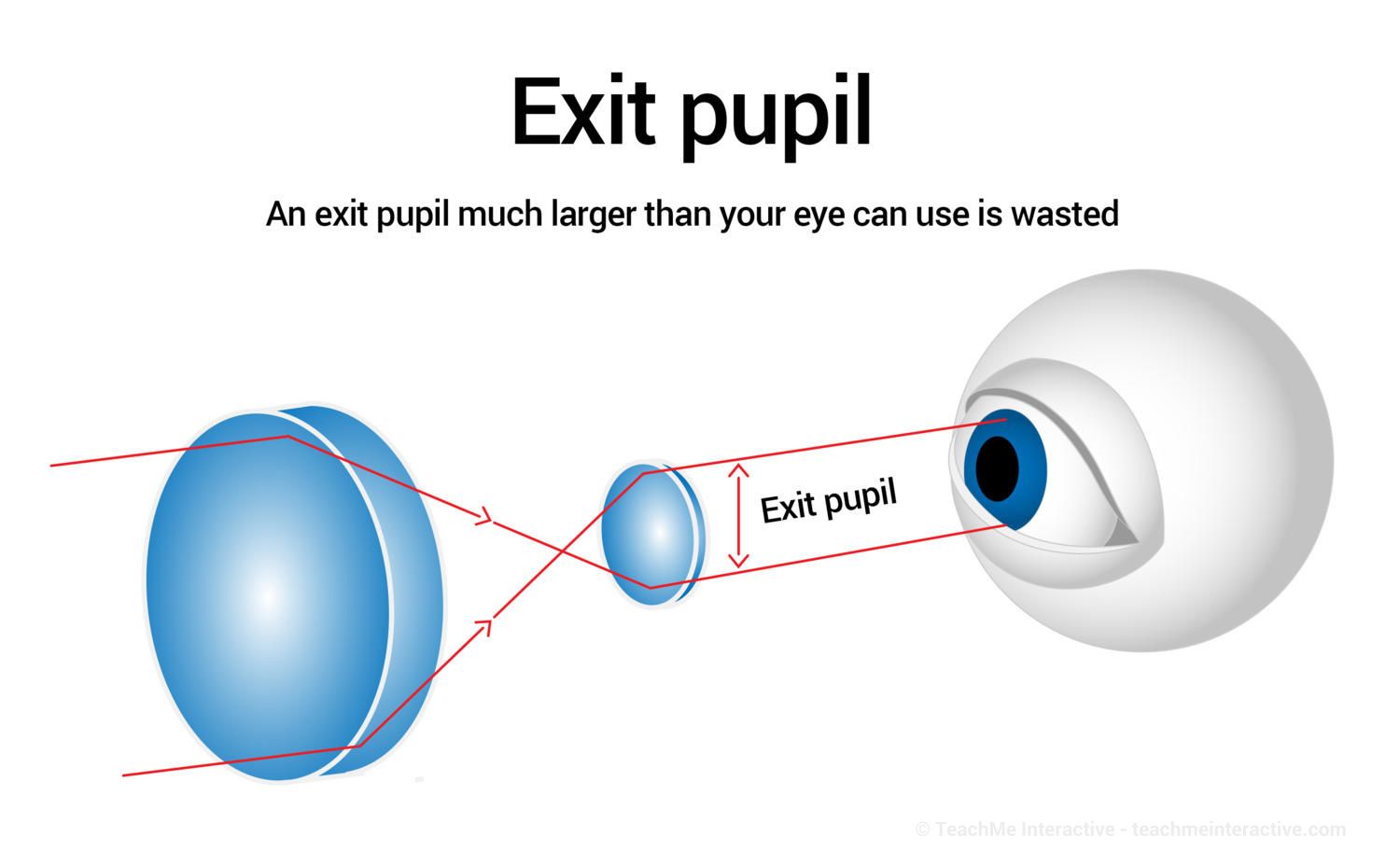
Ade from Optics Warehouse provides a detailed explanation of Scope Brightness and Travel.
...
Brightness is predominantly dictated by the diameter of the Exit Pupil (EP) and the Anti-Reflection Coatings.
The EP is the little circle of light seen in an eyepiece held approximately 18inches from the eye, aimed at a bright wall or sky.
Its diameter is determined by the following equation:
Objective Lens Diameter/Scope's Magnification = Exit Pupil Diameter.
Thus, a 50mm objective at 10X would yield a 5mm EP.
At 6X the EP would enlarge to 8.3mm.
At 4X it would be 12.4mm.
And at 50mm objective at 25X would produce a tiny 2mm EP.
These numbers are the same whether the main tube is 30mm or 26mm (1-inch.)
Your own pupil will dilate from on average from 2.5mm through to nearly 7mm in darkness depending on light conditions throughout the day. Combine this with the scope's magnification (the higher, the more affected the image quality) and together, this is why a 56mm objective is still favoured in the Hunting world to deliver the best possible EP size for last/low light situations. Around 8-10 times mag delivers the best match to our own pupil size in these conditions.
Anti-Reflection Coatings
Next, we come to something that really makes a difference in Rifle Scope brightness: Anti-Reflection Coatings.
These are almost magical because they can nearly double a scope's brightness without adding bulk or weight.
The important thing to know is that raw glass loses about 4% of the light that hits it and another 4% that exits. It is the air-to-glass transition that does it. Many scopes have 6 to 10 lenses with twice that many air-to-glass surfaces. With uncoated lenses, you can easily lose more than half the light that enters the scope. One layer of anti-reflective coating can cut this loss in half. Another coating cuts it in half again and so on. The best, multiple layers can reduce reflection loss to as little as 0.02%, with some of the top brands claiming light transmission figures of around 85%, 90%, even 95%.
Personally, around 90% I think is about as best as the human eye can perceive.
[www.Outdoor-Survivor.net]

[IMAGE: TeachMe Interactive teachmeinteractive.com]
The actual benefit of a larger main tube is more adjustment travel – not light gathering.
The erector system (the part inside the scope that controls magnification and point-of-impact) moves around inside the main tube.
With long-range shots, the bullet drops the further you shoot. Adjusting your elevation dial allows you to compensate for this bullet drop. The larger the main tube, the more adjustment you can dial into your elevation, which compensates for larger drops at further distances.
Interestingly, it’s the erector system that limits how much light is getting to your eye. It also has a big effect on image quality. This can be seen in comparable mag/specification scopes with similar specs. Both have the same magnification range, main tube diameter, and objective lens size, but one has 20 MOA less travel than the other.
Why is that?
Well, some companies decrease the diameter of the erector system, thus providing you with more travel.
This can, however, decrease the amount of light and thus the quality of the image that’s transmitted to your eye.
Put simply, no one Scope can do it all!
Either the emphasis is on available travel (maximum possible), which can impact on image quality if not balanced with MOA mounts, or a balance of both, a happy acceptable compromise.







